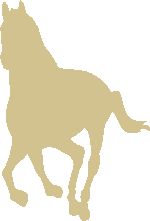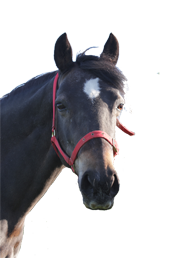Frequently Asked Questions about The Dorsal Wall Lifting Theory and Grooving
If the heels are growing faster, why not just cut them off?
The heels can be cut back to their normal level. Rapid heel growth causes the hoof to curve forward towards the toe, so it's the effect that rapid heel growth has on the shape of the hoof capsule that's the problem.
Why do the heels grow faster?
The hoof growth survey shows that in the normal hoof, the heels grow slightly slower than the toe, this would add strength to the hoof as a structure. In the laminitic hoof this process is reversed and the foot becomes damaged, so there is an inbuilt ability to grow horn at differential rates which seems to go wrong in laminitis, but why it does is unknown.
How high and how deep should the grooves be?
For the grooves to be effective the grooves should penetrate the full thickness of the hoof wall (until the horny laminae become visible but not bleed) and finish about 1cm from the hair line.
Are there any situations when grooving should not be attempted?
Yes, grooving should only be attempted while there is good laminal attachment between the distal phalanx and inner hoof wall, severely foundered hooves will not benefit (too late to help). Also if there is any suspicion that laminitis was caused mechanically, by over lowering the heels then grooving is contra indicated.
Where should the grooves be positioned in the wall?
As long as they are each side of the dorsal wall they will function, so place them where is is convenient for how you want to shoe the foot.
How do you decide if a hoof should be grooved?
The best candidates are early acute, as hoof capsule distortion has not progressed too much. Long duration chronic laminitic animals respond less well. Don't groove cases with a history of flexural deformity, as they can be made more uncomfortable, as the toe is bearing most of the weight and it's now disunited from the heels by grooving.
Should grooves be aligned with the horn fibres?
If you think that the hoof will require grooving for a long period then it's a good idea to groove in alignment with the horn fibres as the groove can easily be extended upwards as the hoof grows. If you are grooving an acute case and hoping not to re-groove then you can cut the grooves vertically in the hoof.
If you have a question e-mail: tom@equinehoof.co.uk
Updated: 28/02/2020

